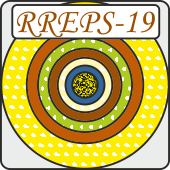Speaker
Description
With over 30 000 accelerator infrastructures around the world, development of beam diagnostics has become a separate area of research in accelerator science. Such unique facilities as the Large Hadron Collider, synchrotron storage ring based light sources and X-ray free electron lasers continuously push the requirements for diagnostics equipment. These days an optimal beam monitoring devise is single shot and non-invasive providing either, detailed information about the structure of the beam or about the beam behaviour. Not all beam parameters can be diagnosed optimally these days.
During the last three years, the emission of Cherenkov Diffraction Radiation (ChDR), appearing when a relativistic charged particle moves in the vicinity of and parallel to a dielectric medium, has been investigated with the aim of providing non-invasive beam diagnostics. Our recent studies [1] of ChDR have revealed its very interesting properties including a large number of photons emitted in a narrow and well-defined solid angle, providing excellent conditions for detection with very little background. This contribution will present a collection of recent beam measurements performed at several facilities such as the Cornell Electron Storage Ring, the Accelerator Test Facility 2 at KEK, Diamond Light Source in the UK, the CLEAR test facility at CERN and the CLARA test facility in Daresbury Laboratory. Those results, complemented with simulations, suggest that the use of both incoherent and coherent emission of Cherenkov diffraction radiation could open up new beam instrumentation possibilities for relativistic charged particle beams.
[1] R. Kieffer, et al., Direct observation of incoherent Cherenkov diffraction radiation in the visible range, Physical Review Letters 121, 054802 (2018)
